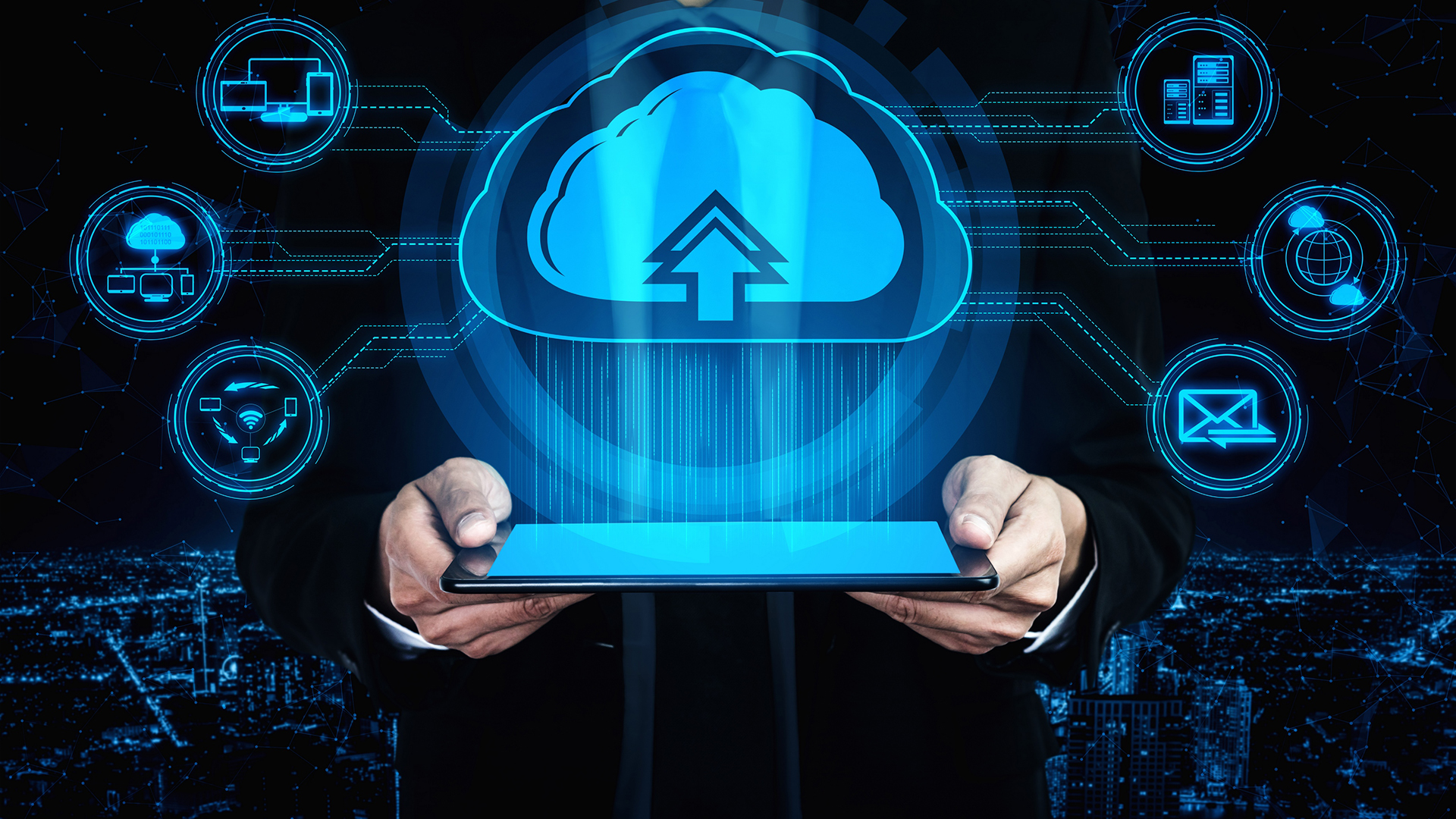With the increasing use of complex digital systems, the organisations face a growing issue with security threats that compromise sensitive data and disturb the business processes. To effectively respond and deal with these risks, security teams have started relying on an essential tool called Security Information and Event Management.
SIEM security services provide comprehensive visibility and rapid response to security threats. This is achieved by collecting, analysing, and correlating data from various sources within organisation’s IT infrastructure.
We can call it the nervous system of security monitoring, helping detect suspicious activities, swiftly respond to incidents, and maintain compliance with regulatory requirements.
What is SEIM?
SIEMs stands for security information and event management, a cybersecurity solution that provides companies with rapid and real-time analysis of security alerts sourced by applications and network hardware.
Security information and event management play a very important role in pinpointing, responding to, and managing security threats by providing the system with a holistic view of security events.
SIEM solutions have two primary components:
- Security information management (SIM): This collects, stores, and analyses log data from an organisation’s system over time. It is responsible for identifying patterns, generating reports, and archiving the history of security data to ensure regulatory compliance.
- Security event management (SEM): This works on real time monitoring, correlations and alerting on security threats. It is responsible for identifying anomalies and any suspicious behaviour by going through multiple sources. This allows the security to respond to any threat as they happen.
By integrating SIM and SEM, the security information and event management provides the companies with a quick processing platform to-
- Aggregate logs and data from many sources like firewalls, servers and applications.
- Detection of potential threats by using correlation rules and behavioural analysis from data collected.
- Automation of alerts and quick responses to reduce the threat impact on the system.
- Supporting the forensic investigations with detailed event logs.
- Ensuring compliance with industry regulations through continuous reporting and auditing.

How does SIEM Work?
SIEM solutions typically operate through collecting and analysing immense amounts of data through the organisation’s IT system. Here is brief view of what is SIEM and how it works-
- Data aggregation and consolidation: SIEM security services gather data from vast number of sources such as firewalls, intrusion detection system (IDS/IPS), antivirus software, servers, company’s applications, and network devices. This layer of data is centralised collection for creating a single view of business’s security posture.
- Log management and event data collection: Data logs are collected and stores for analysis, security information and event management tools retain these stores data to support the historical analysis, compliance audits, and forensic investigations.
- Event correlation and advanced analytics: SIEM services use correlation rules and behavioural analytics to help identify suspicious activities. SIEM security services can detect complex threats by linking events from different systems, which is difficult when examining individual events.
- Real-time incident monitoring and security alerts: Security information and event management continuously monitor incoming data anomalies. When a potential threat is detected, it rapidly generates real-time alerts and notifications for the security teams, enabling them to act swiftly.
- Compliance management and reporting: Most of the organisations are required to adhere to standards like GDPR, HIPAA, PCI-DSS, and ISO 27001. SEIM solutions simplifies compliance by generating a detailed audit trails, reports, and dashboards that align with these regulatory requirements.
- Integration with threat intelligence feeds: SIEM services can enhance detection by integrating with external threat intelligence. This allows the system to stay updated with known threats such as malicious IP addresses, domains and file hashes. This improves the SIEM solutions ability to identify future threats.
Key Functions and Features of SIEM
A. Data collection and Analysis
Security information and event management system collects data logs and events from a wide range of sources like
- Firewalls and intrusion detection/prevention systems (IDS/IPS)
- Serves and operating systems
- Endpoint security tools like antivirus and EDR
- Network devices like routers and switches
- Cloud platforms and SaaS applications
- Authentication systems like Active Directory and LDAP.
This data is given either by agents, APIs, or syslog. It is then normalised into common format to enable effective correlation and analysis.
Once these data are collected the SIEM services use correlation engines to analyse the data across different sources which helps in the identification of patterns of malicious behaviours or policy violations, such as
- A failed login attempt followed by a successful login from an unusual location.
- Multiple file access requests from a single endpoint.
- Communication with known malicious IP addresses.
These correlated events are far more insightful than data logs which allows security information and event management to detect complex threats. This is done by converting raw data into actionable intelligence which leads to faster and accurate action towards the incident response.
B. Real-Time Monitoring and Alerts
Without real-time detection, cyberattacks often unfold rapidly and encrypt entire systems in minutes, which would lead to immediate data exfiltration. Cyber threats can go undetected until the damage is done without SIEM security services.
SIEM solutions continuously monitor network activity and log events to detect unusual patterns. This helps security stay a step ahead of attackers. SIEM solutions provide instant alerts by detecting anomalies and matching them to predefined rules, such as brute force login attempts, privilege escalation, and unauthorised data access. If any attempts are detected, they trigger an immediate alert.
These alerts can be a directly sent to security via dashboards, emails, or SMS, and integrated into security orchestration tools (SOAR) for automated responses. Enabling faster response to threats and reducing data breaches.
C. Threat Detection and Incident Response
Security information and event management detects a wide range of threats through log analysis, event correlation, and behavioural monitoring. Once the threat is detected, SIEM security services enable rapid mitigation through alerting, incident tracking, and integration for coordinated responses.
SIEM solutions offer advanced features like Forensic Analysis and Automated Threat Alerts.
- Forensic Analysis: It stores log history and event data, which allows security teams to perform deep investigations of incidents and determine what actions need to be taken to prevent their recurrence.
- Automated Threat Alerts: It uses predefined rules and threat intelligence that triggers alerts automatically if suspicious activity is detected. These alerts can also initiate automated workflows such as disabling a compromised user account.
D. Compliance and Reporting
SIEM solutions help organisations adhere to various compliance frameworks, such as GDPR, which emphasises personal data protection; HIPAA, which requires strict control over healthcare; and PCI-DSS, which requires secure payment information.
- Tracking and logging user activity
- Monitoring access to sensitive data
- Detecting and reporting policy violations
- Maintaining an audit trail
SIEM services come with built-in dashboards for common regulatory standards, which allow for generating automated and customised reports, highlighting areas of non-compliance, providing evidence for auditors, and reducing manual effort in compiling audit documentation.
Benefits of SIEM solutions
- Real-Time Threat Detection and Response: Security information and event management continuously monitor data through the network, which enables fast detection of any malicious behaviour and security incident. Fast and real-time threat response minimises the damage and reduces the recovery time.
- Enhanced Compliance Management: It has built-in support for regulatory standards such as GDPR, HIPAA, and PCI-DSS, which helps organisations to meet compliance requirements easily. It automates audit trails and retains logs, which is important for passing audits.
- AI-Driven Automation and Efficiency: Modern SIEM services incorporate Artificial intelligence and Machine Learning to detect anomalies, reduce false positives, and automate routine tasks. It improves accuracy and allows security to focus on strategic issues.
- Detection of Advanced and Unknown Threats: Traditional security tools often miss zero-day attacks. The SIEM security services use behavioural analytics and threat intelligence to detect all activity patterns, which allows the detection of threats even with no known signature.
- Improved Organisational Efficiency and Collaboration: Security information and event management centralises security data and streamlines workflows. This leads to better communication between IT security and compliance teams, resulting in faster incident resolution.
- Forensic Investigation Support: This is a crucial post-incident analysis where SIEM solutions archive detailed logs, making the investigation of past incidents easier, tracing attack origins, and determining the scope of a breach.
- Monitoring Remote Users and Applications: With increased remote work and cloud applications, SIEM services provide visibility into the off-premises activity. This ensures the monitoring and security of remote endpoints, cloud services and third-party integrations.
SIEM Implementation Best Practices
- Understand Business Requirements and Define Objectives: it is better to clearly define your organisation’s security goals, compliance needs and risk areas before implementing SIEM security services. A personalised SIEM deployment should always align with your business needs and threat landscape.
- Configure Data Correlation Rules: Customising correlation rules to match your business needs enables SIEM services to detect threats that are relevant to your specific infrastructure and operations.
- Ensure Compliance Auditing and Reporting: Using SIEM solutions, which has compliance tools to track and report on essential regulations automatically like GDPR, HIPAA and PCI-DSS, while making sure the audit logs are retained, which can be easily accessed for inspection.
- Catalog and Classify Digital Assets: SIEM services helps in maintaining an updated inventory of all digital assets such as servers, endpoints, applications, and user accounts. Proper classification helps prioritise alerts based on asset criticality.
- Establish Security Policies and Network Configurations: SIEM security services should be aligned with the business’s security policies, firewall rules, and access controls which provide consistent network configuration ensuring accurate monitoring.
- Reduce False positives Through System Tuning: We must continuously fine-tune the security information and event management to reduce the false positives. This includes refining detection rules, adjusting thresholds, and using machine learning.
- Practice Incident Response Plans: Sync SIEM security services with an incident response plan while conducting regular simulations, which ensures readiness and shortens the response time during the actual incident.
- Leverage AI and Automation with SOAR Systems: For automated routine tasks like ticket creation, device isolation and threat blocking, we need to pair SIEM with Security Orchestration, Automation, and Response (SOAR). This will boost speed and reduce manual effort.
- Consider Managed Security Service Providers (MSSPs): When in-house resources are limited, we can outsource SIEM operations to an MSSP. It provides expert knowledge, constant monitoring, and cost-effective scalability.
Challenges in Implementing SIEM
While security information and event management offer significant benefits, implementing and managing SIEM services can also present challenges.
- Deployment Complexity: SIEM implementation requires integrating diverse data sources, customising of correlation rules, and aligning the system with business needs. It can be overwhelming without proper planning and lead to inefficient configurations.
- Managing High Alert Volumes: One of the most common challenges in implementing SIEM solutions is a poorly tuned system, which can generate massive alerts. These might be false positive or low priority making it difficult for security team to identify the real threat.
- Cost Considerations and Required Skillsets: SIEM services are often significantly upfront and have operation costs like licensing, storage, and personnel. Tuning and managing SIEM security services requires skilled analysts and engineers who can understand cybersecurity and system architecture.
Best Practices for SIEM Deployment
- Customisation and Ongoing Maintenance: All businesses have different threats and compliance requirements; hence, we need to customise SIEM services to meet our needs. SIEM remains effective with regular maintenance, software updates, and rule fine tuning.
- Efficient Log Management and Tool Integration: Collecting too many irrelevant data can overload our systems. So, focus on storing on meaningful and critical logs. Integrating SIEM with other security tools like firewalls, endpoint detection (EDR), and SOAR platforms can create a cohesive and automated defence system.
- Staff Training for Optimal SIEM Usage: The SIEM best works with people managing it. Hence, give your security team with regular training on interpreting alerts, investigating incidents, and managing dashboards to boost response time.
The Future of SIEM Technology
With the evolving cybersecurity systems, security information and event management are also advancing to the new future with modern technologies like Quantum computing and cryptography implications.
The quantum machines have evolved significantly. This pushes SIEM security services to detect threats against quantum-resistant algorithms and safeguard future cryptographic standards. To accelerate threat analysis the future SIEMs may have to use quantum inspired computing models.







